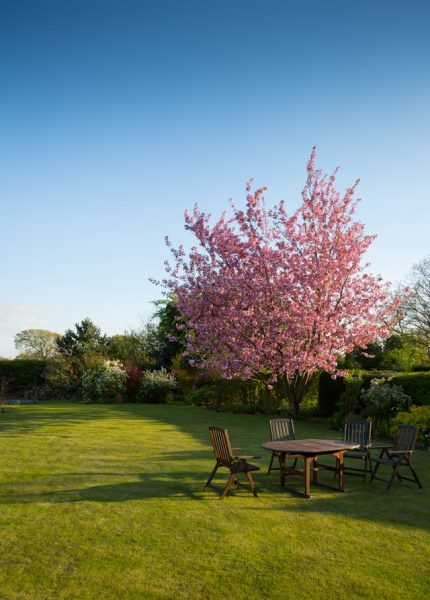
There are many reasons why you might wish to keep your garden as low maintenance as possible. It could be due to a lack of time and gardening ability or because of issues surrounding age and health. But that doesn’t mean you should give up your garden – especially if that means moving from your beloved home.
A redesign of the space could help to increase its usability and minimize the effort needed to keep it looking good. So, what tricks can you utilize to make a low-maintenance garden?
Levelling up
First of all, if mobility is an issue or you have young children, you might want to think about access to your garden. Ideally, you want to do away with the need for steps into and out of the garden. So, you can walk straight through your patio doors with ease.
A garden that’s all on one level is easier for everyone to use, but it’s not always possible to do this. You may be able to add topsoil to the lowest end, to even things up. But a steeply sloping garden is going to be trickier to level up. In this instance, you may need to add tiers instead. This is known as terracing. It still gives you level areas but on multiple levels. If steps aren’t practical, you could install ramps to get between each level. Whatever you choose, terracing can make a garden much easier to manage as mowing and growing on a steep slope requires a lot of effort and can create drainage issues.
Low maintenance surfaces
One of the most time-consuming jobs in a garden is keeping the surfaces neat and tidy. Mowing lawns and cleaning patios are some of the most physical jobs you can do around the home, so simplifying these should be part of your low-maintenance garden design.
Switching out your traditional lawn for something a bit different could mean less mowing, feeding, and watering. Plus, it can enhance the color and texture of your garden whilst making it more wildlife-friendly. You could try a turf with a mix of slow-growing grasses, clover, and native flowers. Or you could do away with grass altogether and try planting flowers that carpet the area, such as creeping thyme, Mexican daisies, or geraniums.
If you still hanker for that perfectly manicured lawn, you could plump for artificial grass instead. To get the most out of your artificial grass installation, spend a bit more to get a realistic-looking lawn and make sure your ground is prepared properly, with a level surface and adequate drainage. And edge the area as you would a lawn to ensure it all looks attractive.
It’s not just the lawned area that needs to be low maintenance. Your patio area and paths should be too. Some slabs are more prone to staining than others, so you need to check how easy the materials are to clean and maintain before laying them. For instance, porcelain tiles aren’t porous, so they don’t need sealing and are less prone to staining and algae build-up.
Reducing the strain
Reducing effort and strain is key to a low-maintenance garden. One way you can do this is to incorporate raised beds and tall planters into your design. With the surface of the soil raised to around waist height, there’s no need to bend to tend to your plants and everything is at eye level when you’re sat in your garden. Doing this also reduces the ability of slugs and snails to reach your leafy plants.
Try to choose plants that will look after themselves – shrubs, such as azaleas and heathers, are generally slow-growing and don’t need much pruning. Rather than planting seasonally with annuals and summer bedding plants, go for perennials that come back every year. Think about how to maximize color and interest all year round without needing to spend hours gardening. For example, dogwood provides lush green foliage in summer and bright red or orange stems in winter. And it’s really low maintenance.
Alternatively, you could consider converting to a gravel garden with drought-tolerant plants, to minimize the need for weeding and plant care. You can lay the horticultural fabric down first, leaving holes for your plants, and then cover it with gravel. If you’re happy to let plants self-seed, you can leave the fabric out. Choosing self-seeding plants means there’s no need for deadheading and you’ll get a ready supply of new plants without needing to do much. Mediterranean-looking euphorbias, pretty thistle-like sea holly, and Mexican feathergrass would all work well.

